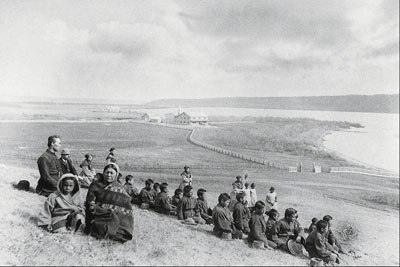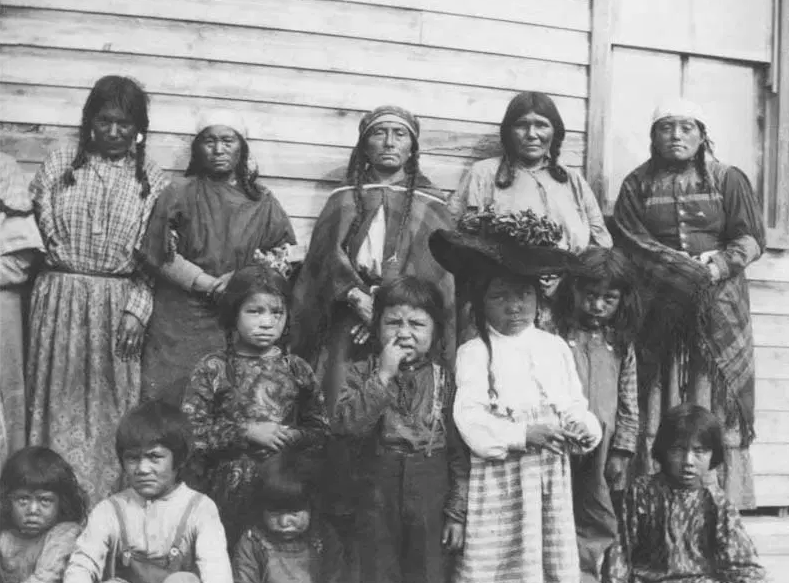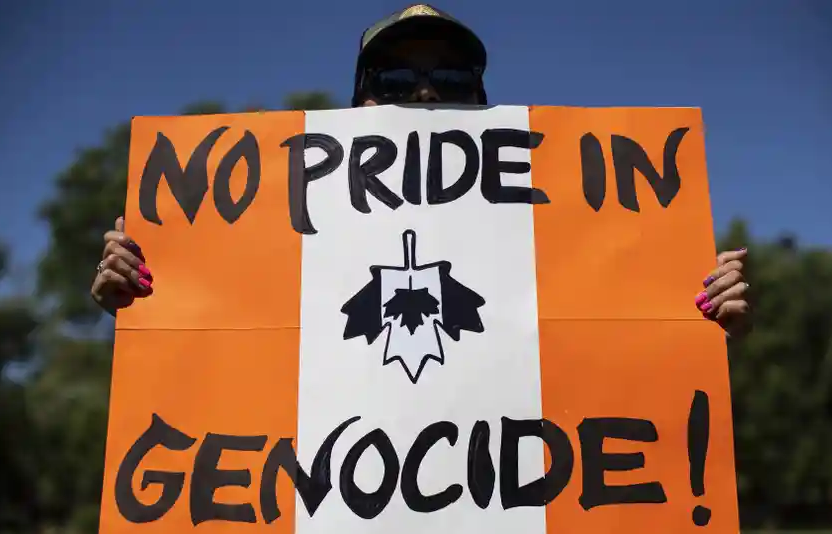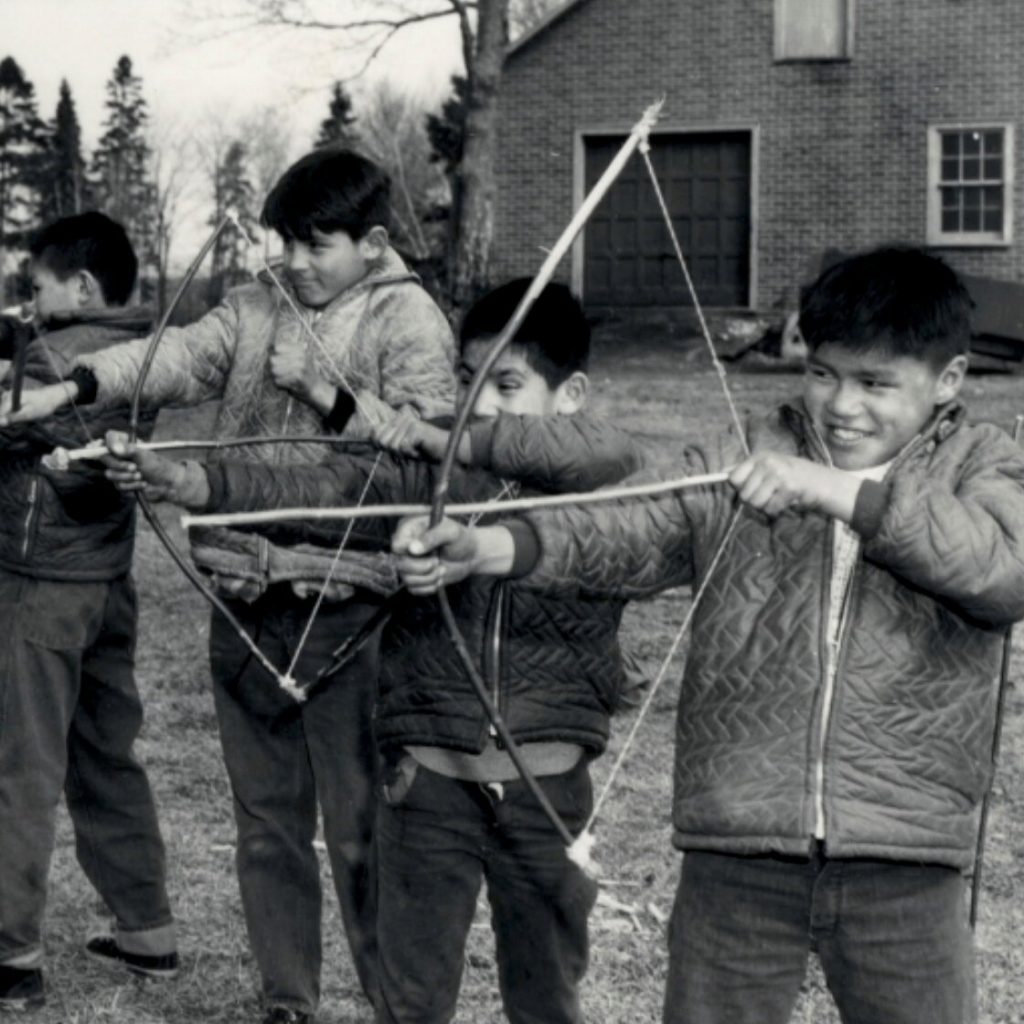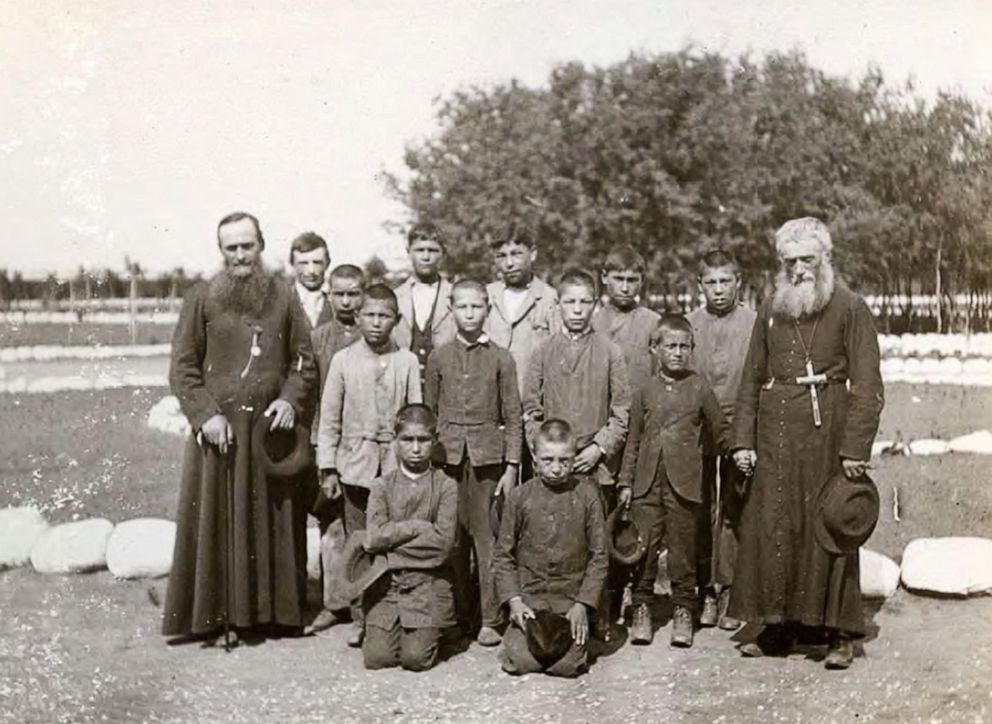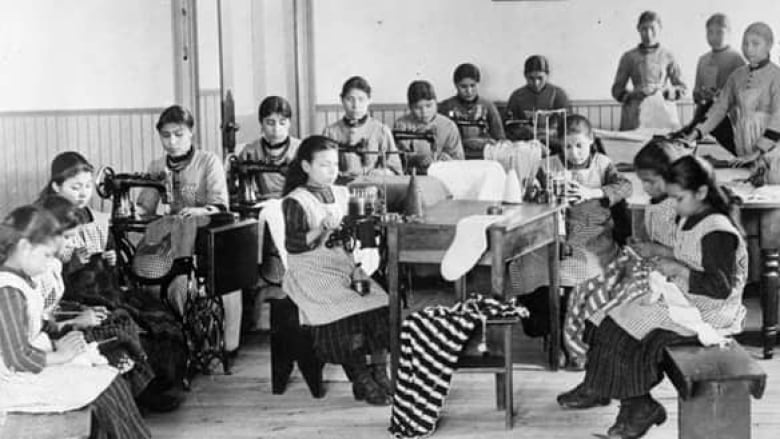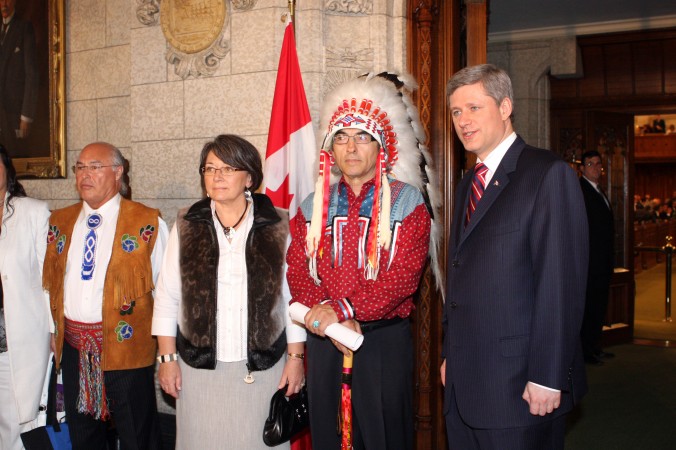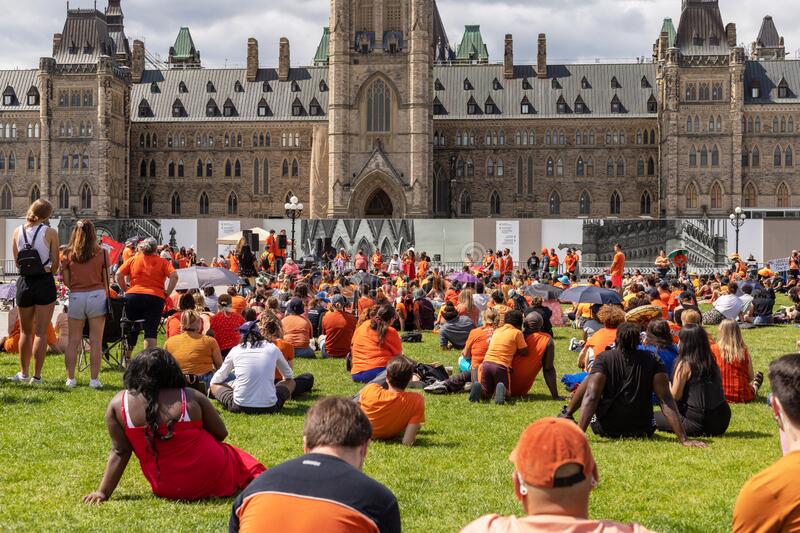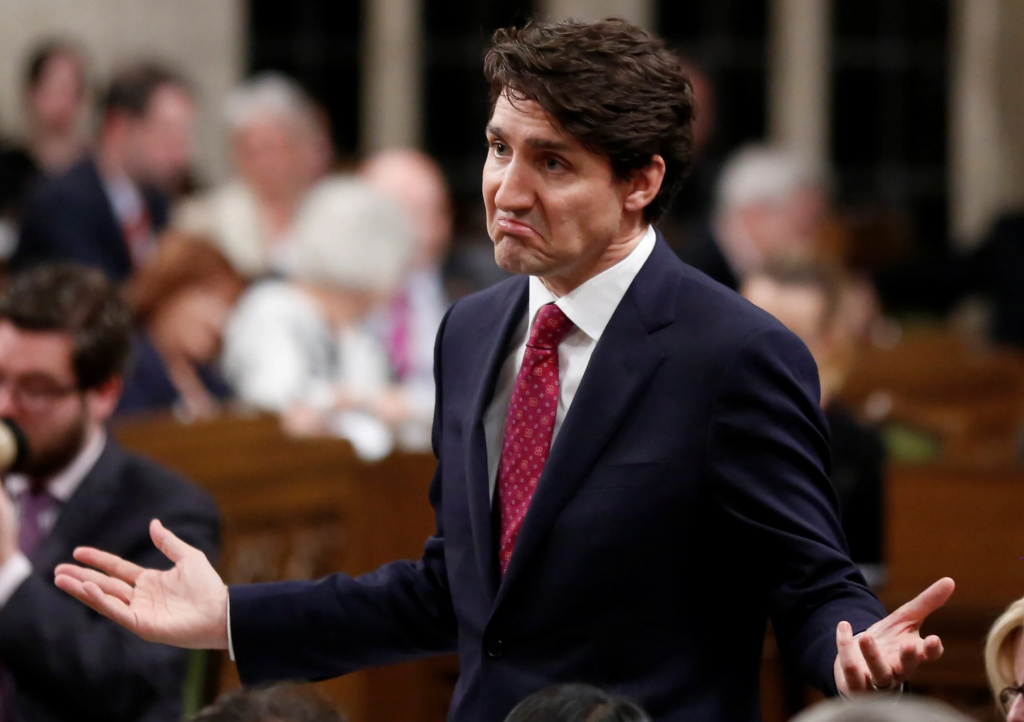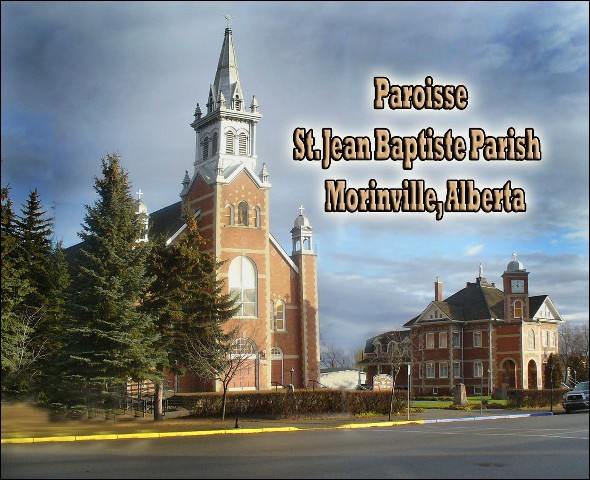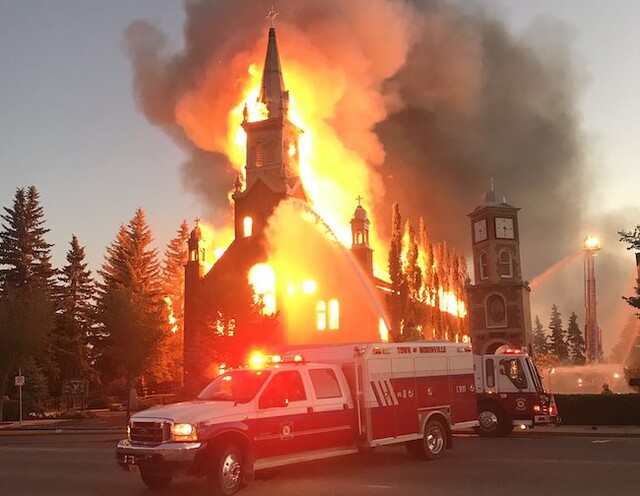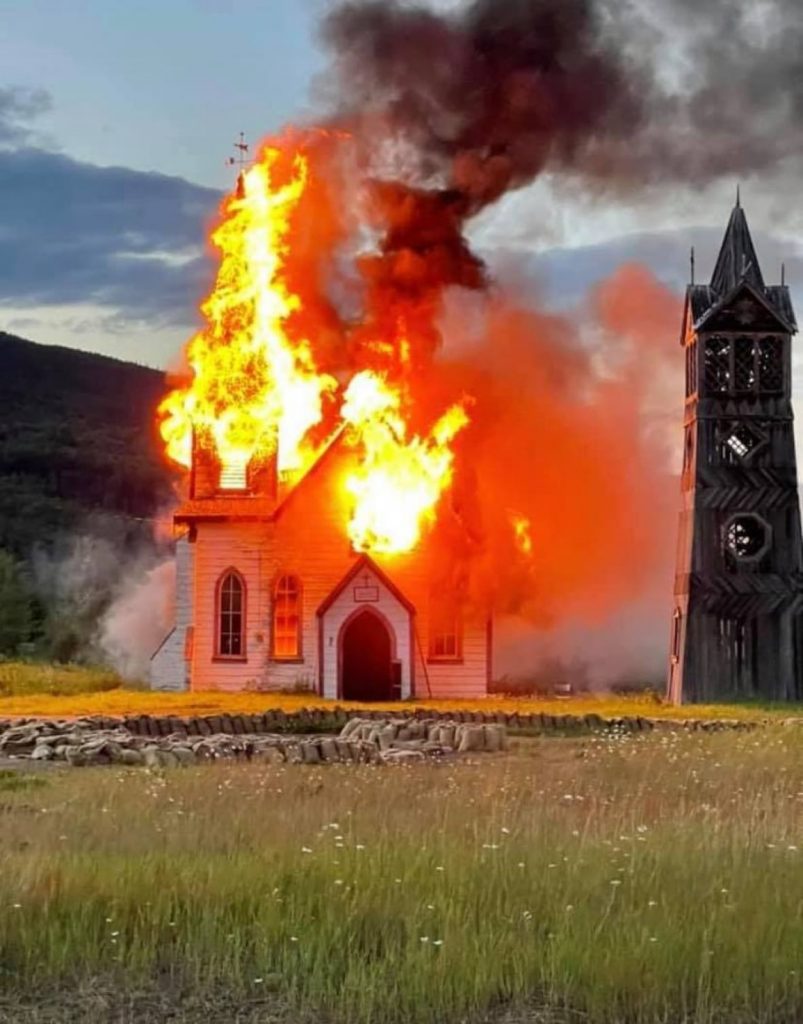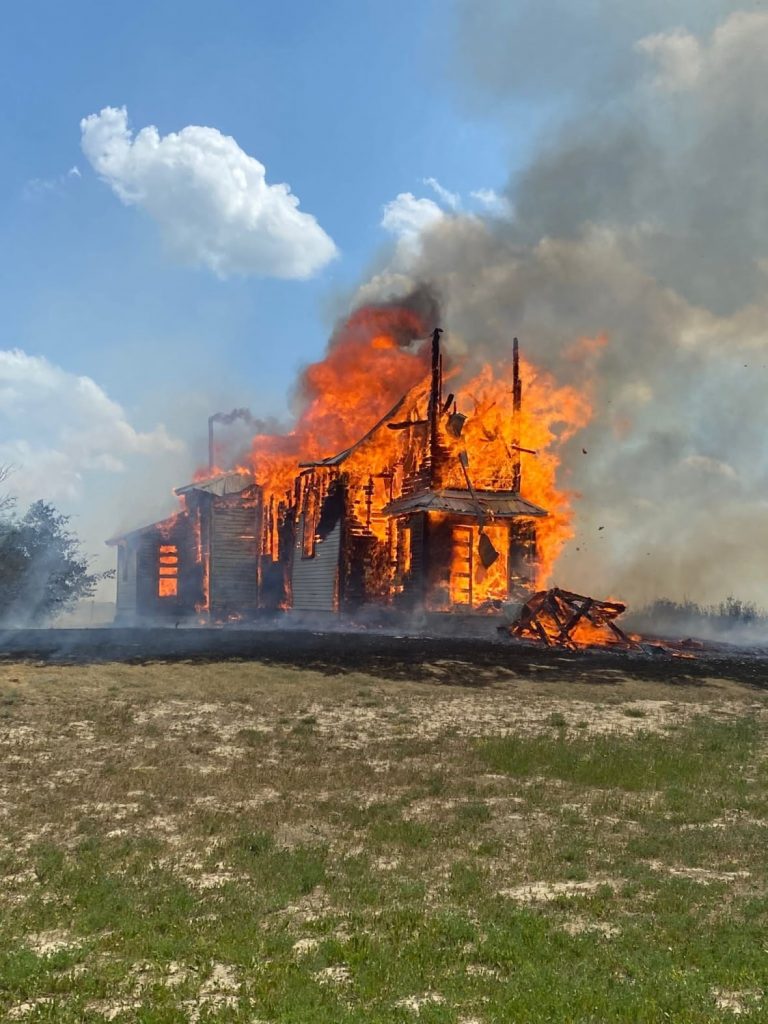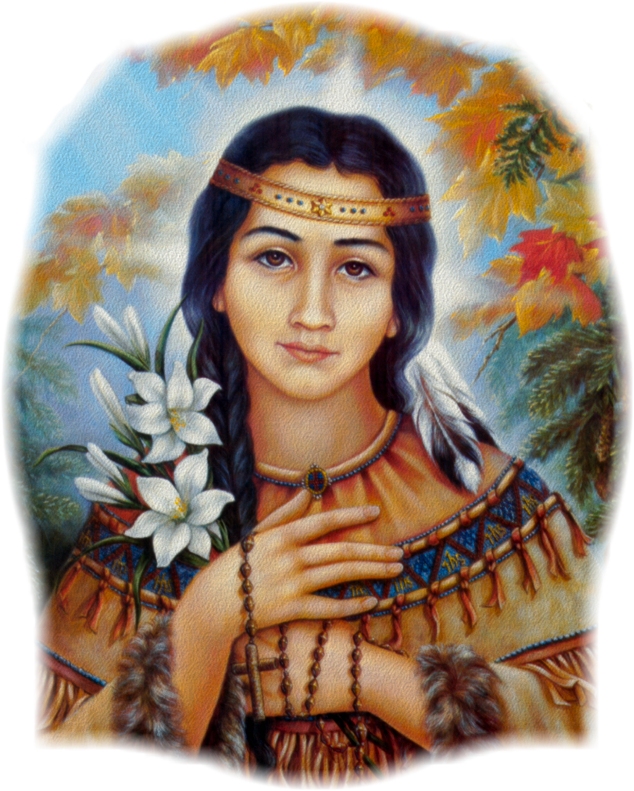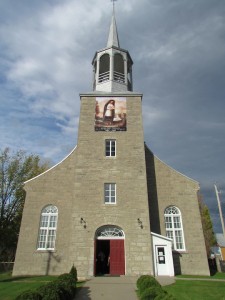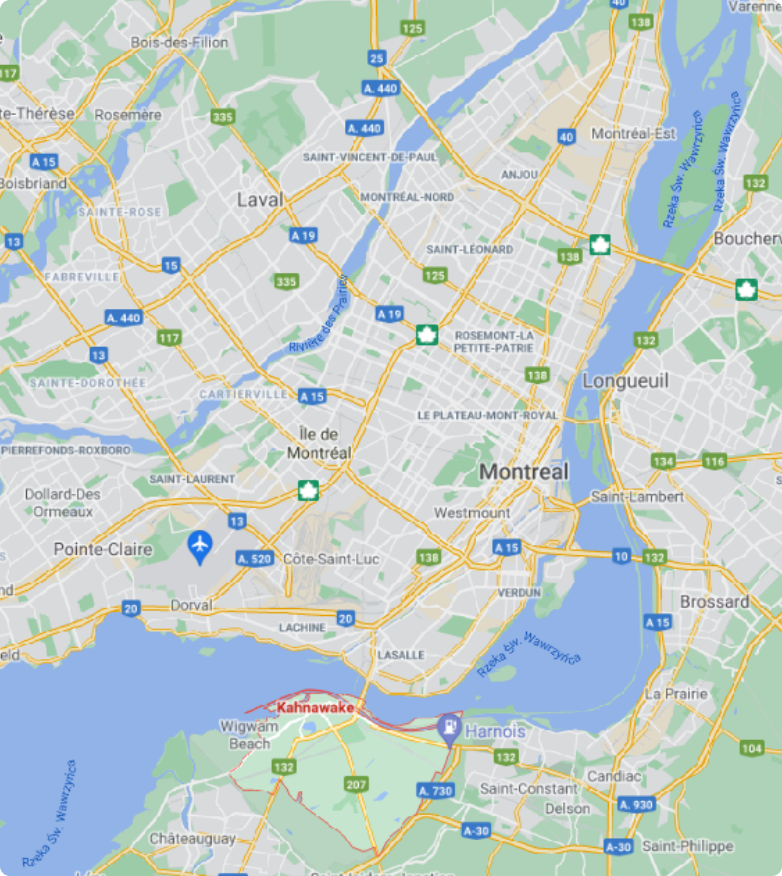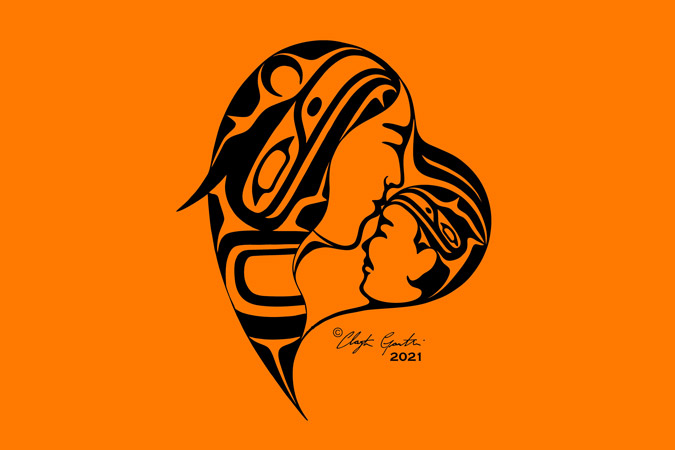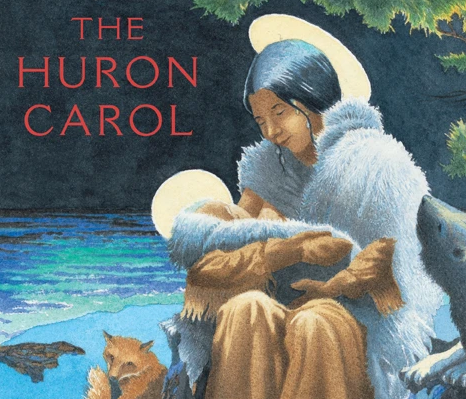Canada, eh? – Residential schools
The first residential schools in Canada were established in the early 1600s by Catholic nuns and priests. In 1883, these schools began to receive funding from the federal government. That year, the Government of Canada set the main goal of the system: to assimilate Indigenous children into white society.
.
The system grew out of the Gradual Civilization Act of 1857 (GCA 1857), which required Indigenous men to learn to read and write English and French, and to abandon their traditional names for government-approved surnames. Sir John A. Macdonald, the first prime minister of Canada, authorized setting up a system of schools for Indigenous children in western Canada in 1883.
.
1. Waterloo, the statue of Prime Minister J. MacDonald was stained in red; 2. “No pride in genocide” – protest in Ottawa;
In the years following GCA 1857, new schools were built, many in remote locations and, between 1831 and 1996, a total of 150 operated. During this period, more than 130,000 First Nations, Métis and Inuit children were forced to attend that residential school system. For those native families who resisted the system, children were forcibly taken away by the RCMP. The schools were also known for overcrowding, poor sanitation, unhealthy food and menial labour.
.
In the 21st century, Macdonald has come under criticism for his role in the Chinese Head Tax and federal policies towards Indigenous peoples, including his actions during the North-West Rebellion that resulted in Riel’s execution, and the development of the residential school system designed to assimilate Indigenous children. Macdonald, however, remains respected for his key role in the formation of Canada.
The historical circumstances are described in detail in a 1907 report by Dr. Peter H. Bryce, then Chief Medical Inspector for the Federal Department of Internal and Indian Affairs. He wrote a book in 1922 called The Story of a National Crime to publicize the great federal financial and medical negligence in this case. Not only his inspections, investigations, reports and recommendations on tuberculosis in Indian Residential Schools were ignored but they were hidden by the federal government.
.
Prime Minister Stephen Harper issued a public apology on June 11, 2008, on behalf of the Canadian government.
A regularly updated website, titled “The truth about the Indian residential school program of the Canadian government”, sheds light on what really happened in these schools, and shows that the truth is quite different from what the mainstream media report. Among other things, we learn that tuberculosis epidemics caused the deaths of many children in the years 1910-1920 due to federal financial and medical negligence in state-funded residential schools in Western Canada. If the children were treated badly, then why the federal government did not send there its own teachers and educators?
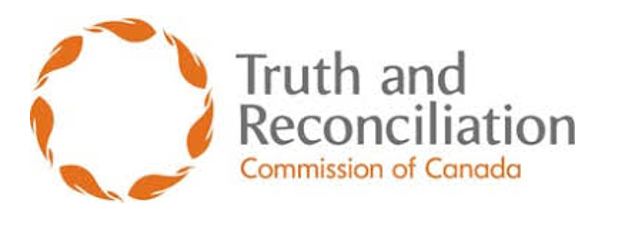



The Truth and Reconciliation Commission found crowded living conditions, poor nutrition and substandard medical care made the children more likely to die of disease and infection.
.
In early June 2021, anonymous graves of 215 children were discovered on the grounds of a former First Nations residential school in Kamloops, British Columbia. Three weeks later, it was announced that other 750 anonymous graves were discovered during excavations on the site of an ancient Native residential school in Marieval, Saskatchewan. Among the massive news, they do not mention refusal of the federal government to manage transport of children’s bodies to their villages.
.
Ottawa, protest of the indigenous people in front of the parliament building.
.
Immediately, mass media joined in accusing the Catholic Church, which should be responsible for this residential school at the time, of mistreating indigenous children. Prime Minister Justin Trudeau added more fuel to the fire, declaring: “I am deeply disappointed by the attitude of the Catholic Church,” and he demanded apologies, not only from the clergy, bishops, religious communities, but also from Pope Francis himself. With social media on fire, 68 churches were burnt down or damaged.
.
St Jean church in Morinville, Alberta – burnt to the ground
It seems fashionable these days to spread bad news or malicious gossips about the Church, but the problem is that the Canadian government is mainly responsible for this situation. It was the Canadian government itself, who created these schools and the harsh conditions that caused diseases and death of the indigenous children. And when those children, left without the governmental medical security, died – the federal government refused to pay for the transport of children’s bodies to their places of origin.
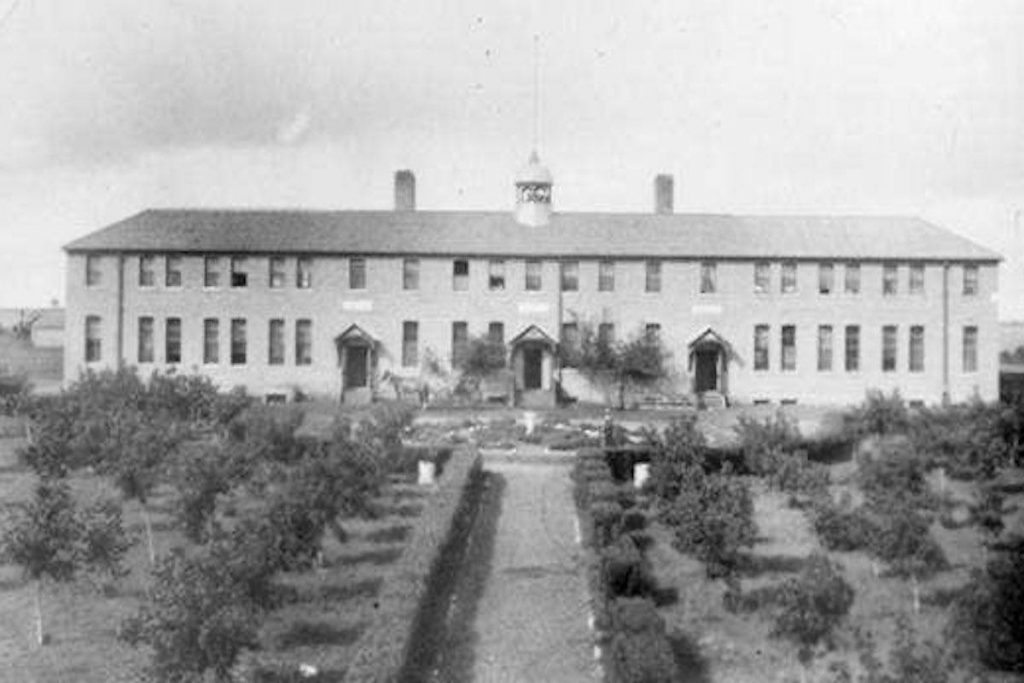



Will the prime minister of Canada ask pardon of Catholics and other Christians, whose churches were burnt across the country last summer? In order to be responsible politician who guides the federal government, will he apologize to pope Francis, as he wanted to charge him for what happened in Canada more than 100 years ago? Will he apologize to queen Elisabeth, the head of Anglican Church worldwide for the Anglican churches burnt in Canada?
.
1. St Paul Anglican church in Kitwanga, BC; 2. Holy Trinity Church, a historic landmark of a remote community in northern Saskatchewan.
.
The residential schools endured 110 years under authority of the federal government therefore its prime minister should apologize. For justice to be done for Indigenous peoples (as well as the Catholic Church), it is important to uncover the truth and set the record straight. To do so, you must visit and publicize the site: www. veritepensionnat.ca / www.veritepensionnats.ca/indian-residential-schools.html .
*
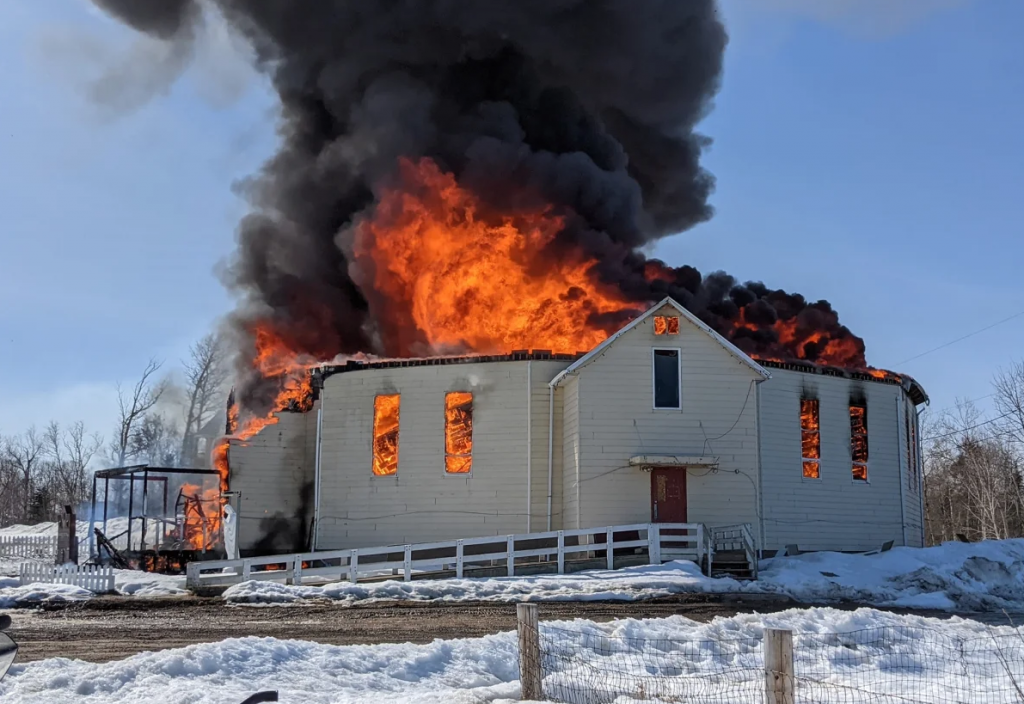



Amidst the rubble left by the fire that consumed the Catholic Church in St. Theresa Point (Manitoba), laid a picture of St. Kateri Tekakwitha almost completely intact. “I think that picture gives us some hope for a new church,” said Philip Wood, a member of the community. “If you look at the building itself, nothing survived, and this painting made of canvas did. It’s hard to explain. People are saying that it’s a sign that we’re being protected.”
.
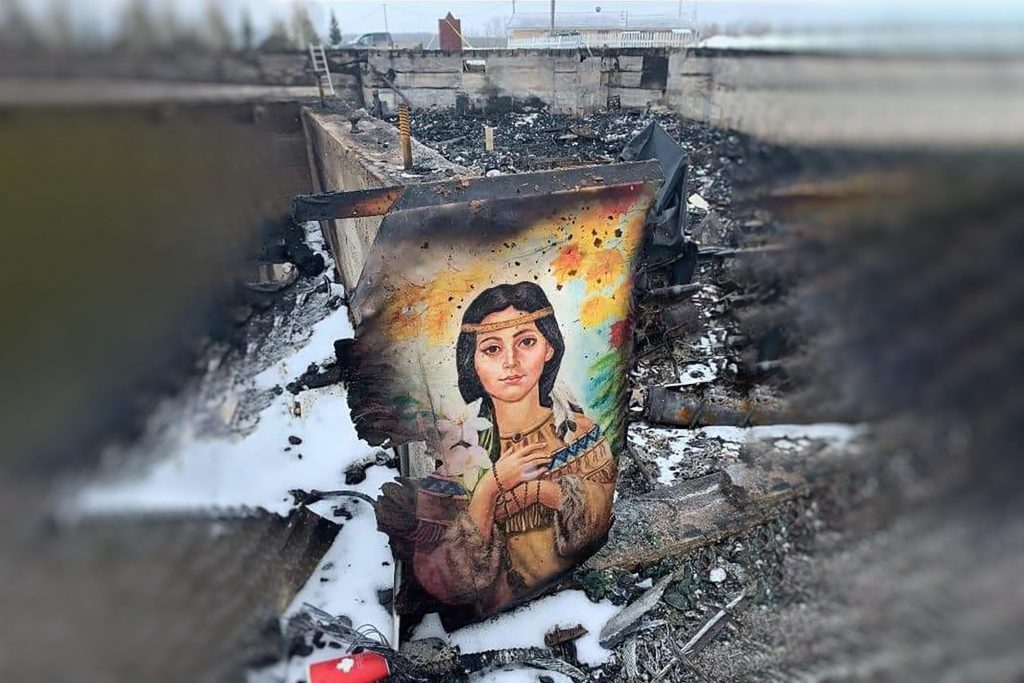



Her image on canvas somehow survived the blaze that melted the metal frame, left in ashes on everything else in its surroundings. The colours, still vibrant, and her peaceful image still so moving is bringing encouragement to the Indigenous community in northern Manitoba – still reeling at the loss of their church. Kateri Tekakwitha (1656-1680), known as Lily of the Mohawks, is the first North American Indigenous saint. Her tomb is located in Kahnawake (near Montreal, just across the St. Lawrence River) and her Feast is celebrated on April 17. Saint Kateri Tekakwitha is the Healer’s Saint (6:46) https://www.youtube.com/watch?v=EbzlsljxdmU.
.
National Shrine of Saint Kateri Tekakwitha in the Kahnawake Mohawk Territory (French: Territoire Mohawk de Kahnawake).
The day the fire happened is not one the community will soon forget. Chief Marie Wood got the call: the church she had just left was on fire. “I was devastated,” she said. “I don’t want to say that I cried but I cried. I was just hurting. It was sad to see it go. I took a picture of it and I said thank you to the church for being good to us.”
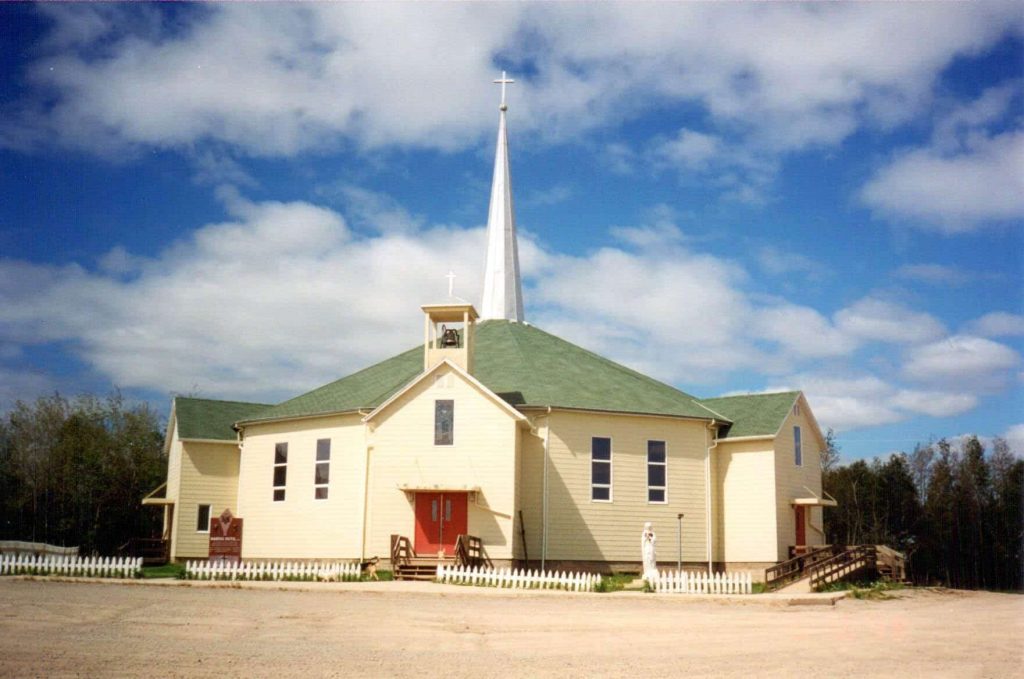



The church of the Indigenous People in Manitoba (before it was burnt).
Marie Wood was flooded with memories of all the years spent within its walls. She was married there in 1970 and had three children and 11 grandchildren who were all baptized and confirmed there. It was there where her husband’s funeral service was held just two years ago. “The church meant a lot to everyone in our community,” she said. “It’s almost like losing a member of our community. It was a great loss. Our priests understand our traditions, it’s all the same Creator that we worship.”




Children swim in Island Lake at St. Theresa Point First Nation
Let us pray for the innocent little ones, for their souls and families. May peace and friendship reign among indigenous peoples and other citizens in this great country. Let St. Kateri Tekakwitha be a messenger of truth and reconciliation between the victims of the government’s negligence and all responsible for this tragedy. Each crime should be confronted by a justice system. But group responsibility for individual wrongdoers is a sign of totalitarianism and it has, among others, a very bad reputation in the past century’s Nazi-Germany. May never government or any other institution make divisions between children and their parents, neither let it undermine parents’ authority. Let nobody deprive the parents of the rights to be the first education of their children.
.
When coming close to the new year, we send best wishes to all Canadian families and share with them this traditional “Huron carol” (5:02) https://www.youtube.com/watch?v=DgPeEvUl06Y
*
Finally, let’s listen to the other side. OMI Lacombe Canada was founded in 2003 in response to the changing face of the Roman Catholic Church in Canada. We are part of the worldwide congregation of priests and brothers called The Missionary Oblates of Mary Immaculate who serve the poor in more than 60 countries on five continents.
The Oblates first arrived in Canada in 1841. As the young country grew we grew with it, quickly moving west and serving First Nations, Inuit and Metis people along with the early immigrant communities from Europe, and founding most of the dioceses west of Ottawa. Today the 185 Oblates in OMI Lacombe Canada devote our lives to the service of the poor throughout the country’s smallest towns and largest cities. Called to live in apostolic community, we live our mission in community. Our life at both the local and provincial levels reflects the following principles:
- Our communities are prophetic, above all proclaiming a Church as the People of God, and always at the service of justice, peace and the integrity of creation within the Church and in the world.
- Our communities are places of welcome: hospitality is at the very heart of the mission of evangelization. We foster and celebrate a diversity of cultures and languages among our members.
- Our leadership at all levels is primarily at the service of animation of the community and of the mission and is shared with the other members of the community.
- We actively promote participation of women and men who share the charism and mission of St. Eugene de Mazenod.
________________
